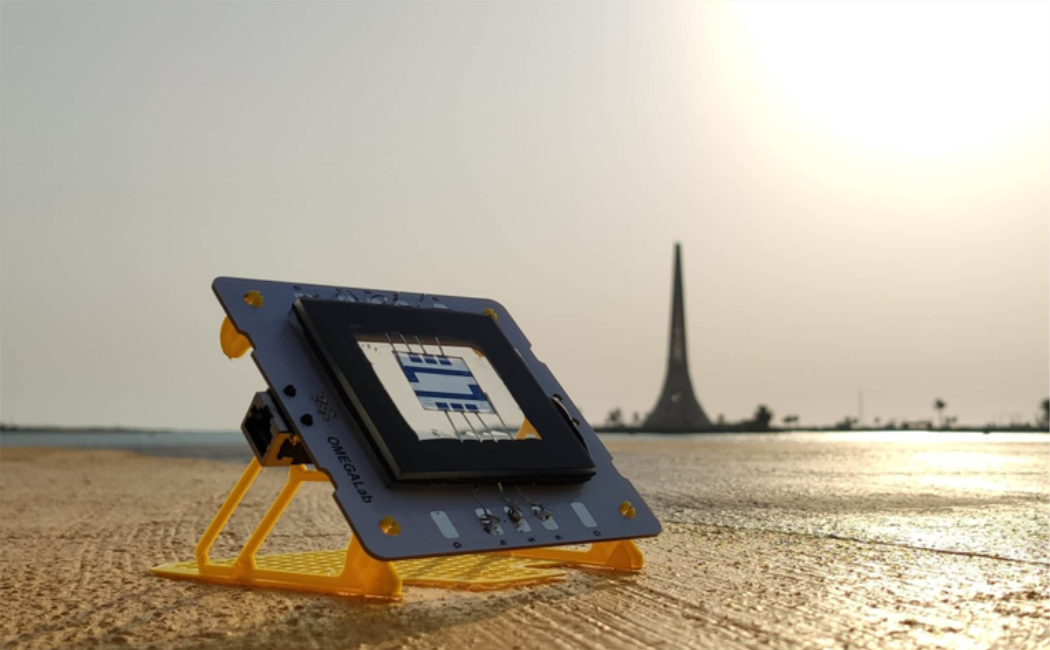

LATEST
NEWS

31 October, 2023
Stability and efficiency are critical when evaluating solar cells. The organic solar cells (pictured) were tested under extreme hot Saudi climatic conditions to evaluate their stability. © 2023 KAUST.
Molecular-level insight into one family of organic solar cell materials, known as Y-series nonfullerene acceptors (Y-NFAs), could help enhance their outdoor stability. This discovery by a KAUST-led team is expected to lead to many applications ranging from building-integrated photovoltaic windows to net-zero greenhouses.
Lightweight, flexible, quasi-transparent and amenable to large-scale manufacturing, organic solar cells have taken center stage in renewable energy research. Efforts to boost power conversion efficiencies have led researchers to introduce Y-NFAs in the active layer of these devices, breaking new ground for high-efficiency solar cells.
Y-NFAs have broad absorption spectra, tunable energy levels and excellent charge transport properties, making them ideal components for organic photovoltaics, explains Han Xu, a Ph.D. student in Derya Baran’s group.
The research team has now produced devices with record efficiencies of 19 percent, but the relationship between their molecular structure and stability is unclear. Steady performance of Y-NFA-based solar cells under real-world operating conditions also remains elusive, hindering the commercialization of these devices.
Stability, as important as efficiency, is critical when evaluating solar cells. Device lifetime hinges on factors such as ambient moisture and oxygen, light exposure and heat, and “outdoor evaluation, compared to lab-scale stability assessments, is the closest way to assess the real-world performance of a solar cell,” Xu says.
Baran, Xu and coworkers evaluated the outdoor stability of various Y-NFA-based solar cells under extreme hot Saudi climatic conditions to understand the structure–stability relationship of these devices and guide the design of small molecules that would yield high-performance devices with enhanced stability.
To prevent moisture and oxygen from diffusing into the devices and counteract their effects, they wrapped the devices in thermoplastic polyurethane and measured the performance using outdoor sunlight as light source.
“Our tests revealed that organic solar cells operating outdoors presented minor performance changes at 65 degrees Celsius and the overall stability of the solar cells is connected to their photostability,” Xu says. This suggests that light is the main factor governing the outdoor lifetime of the devices. “Improving the photostability of active layer materials is crucial for enhancing the outdoor lifetime of solar cells,” he adds
Learn more at KAUST Discovery.